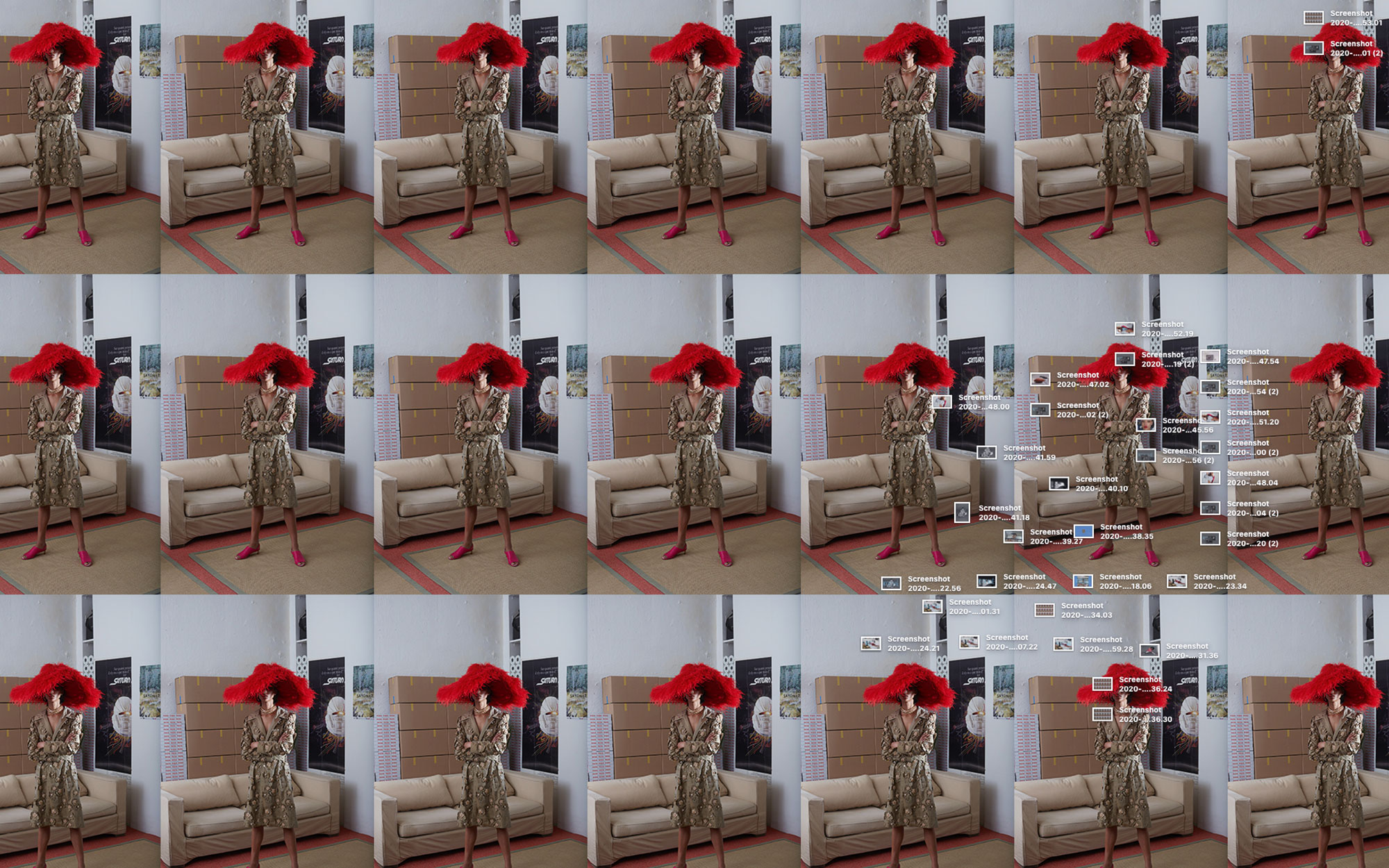
From the beginning of her design career, Christelle Kocher has stood firmly between the spectrum of informality and opulence. It wasn’t long ago since launching her label KOCHÉ in 2014, that the French designer came on the international radar with her LVMH Young Designer Prize nomination. Since then she’s won the 2019 ANDAM Grand Prize, secured licensing from Renzo Rosso’s OTB fashion group, released a one-off collaborative collection with Emilio Pucci, and continues to moonlight as artistic director at the Maison Lemarié, the Paris plumassier that specializes in feather and flower creations for luxury fashion houses like Chanel. Known most for her upcycled, patched together sportswear with couture manipulation, Kocher has taken that second gig and finessed idiosyncratic silhouettes like polo shirts and rugbies by softening them with lace, feathers, flowers, and embellishments. As Georgia Palmer stars in visuals shot by Suzie & Leo, stylist Tereza Ortiz speaks with Kocher on her beginnings, expansion and the endless pace of fashion that the digital age demands.
Photographer – Suzie & Leo for Models.com
Stylist and Interview – Tereza Ortiz
Hair – Yuji Okuda
Make up – Min Kim
Casting – Marie Levy | Set Design – A + V
Production – Residence Agency
Model – Georgia Palmer at Supreme Management (Paris)
Intro text – Irene Ojo-Felix
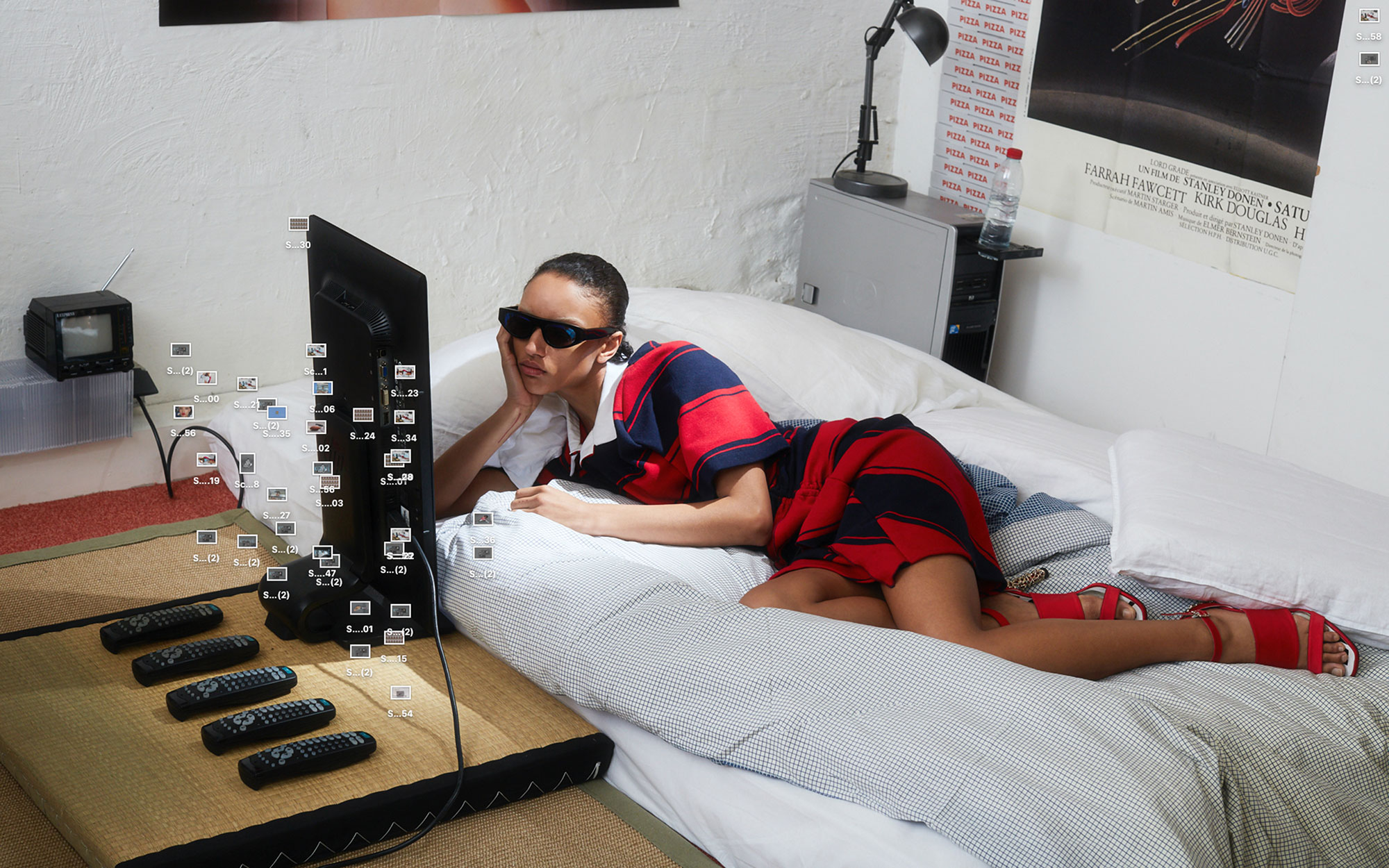
Where are you born and how were you raised? Inclusivity and diversity has always seemed like big topics in KOCHÉ – is that because of how you grew up or because of moments in your adult life?
I was born and raised in a suburb of Strasbourg in the East of France, to a working-class family. I went to public school with a rich diversity of kids. I guess it did matter when I started KOCHÉ – this is my background and I want KOCHÉ to be worn by real boys and girls without focusing on reproducing something from my youth. I’m curious, and I know that’s a huge motor in what I do. I love exploring different cultures, people and this openness is definitely what drives KOCHÉ.
Do you have a woman or man in mind when you design? Do you have a muse?
Never actually. I get inspired from time to time; by friends, artists, people I meet. But it’s not directly linked.
You have had several shows at public places, do they represent something specific to you or is the idea to democratize fashion?
I like the idea of something very alive, vivid, where a show is something between many people in the same place at the same time and where fashion is included in the life of the city. I also like to attract people that have nothing to do with fashion in the first place. Public space always brings another kind of energy – I love that!

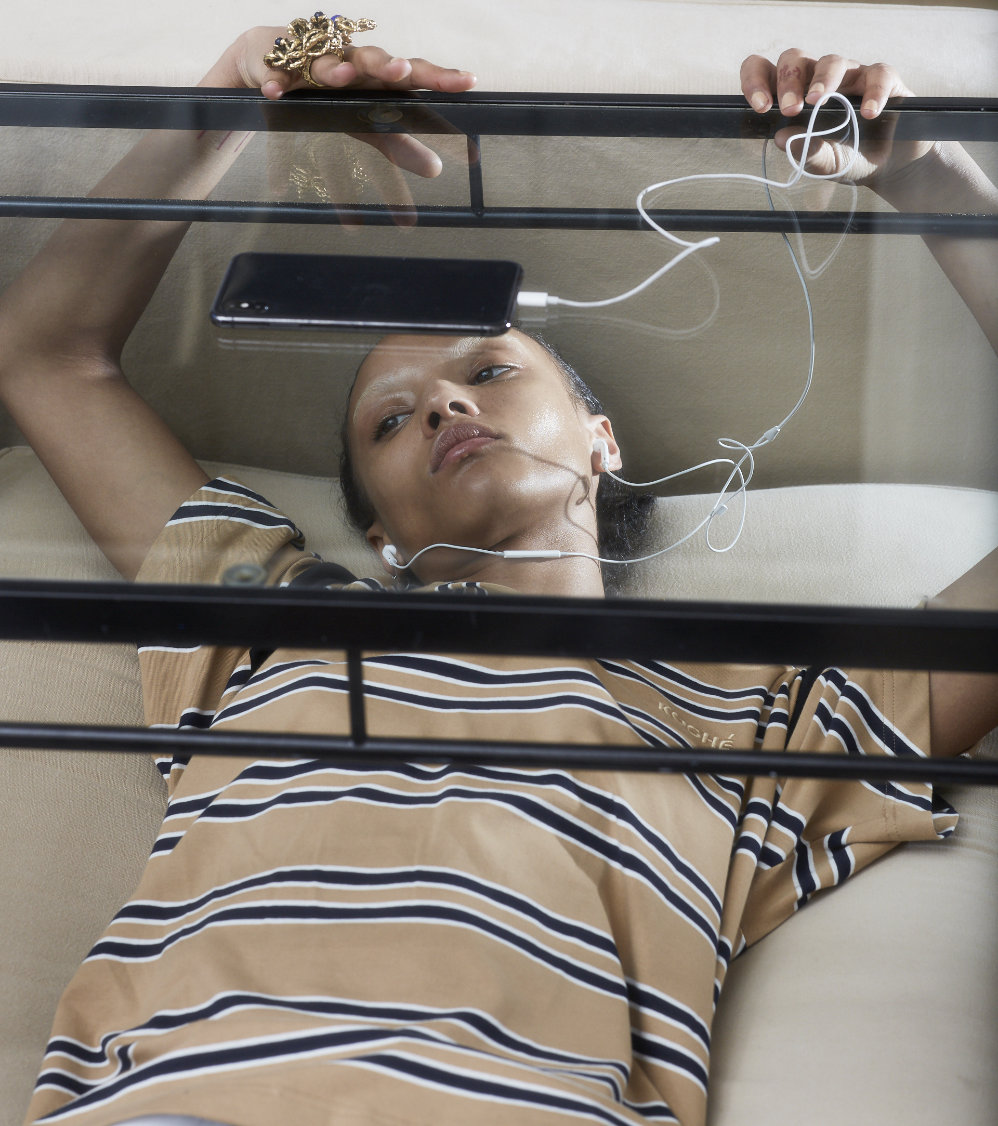
Did you think KOCHÉ would be a reality when you studied at Central Saint Martins? When you were growing up?
Not really. I knew I would have to gain more experience in the industry before having this 360 degrees vision which is absolutely necessary to create a brand. I knew that I eventually wanted to create my brand but I had no money and no example to follow at that time.
How was it in 2015 starting out as a young female entrepreneur on the fashion scene? Did you have good support starting out?
People believed in my project in Paris, New York, and Tokyo early on. I went to New York to talk to people and to catch that energy – you feel anything is possible there if you have an idea and the determination to make it happen. I had to stick to my vision and to smash in a few doors, which women do very well.
Do you have other designers that you look up to and take advice from?
I worked for many big brands before so I learned a lot. But Michèle Lamy and Virginie Viard have both been very supportive since the beginning. Michèle came to all my shows and we still exchange a lot.

You won the ANDAM prize 6 months ago, has it changed your views on your brand and on fashion as an industry to win and receive mentoring from Renzo Russo?
It was pleasant indeed to have the prize 30 years after Martin Margiela and it was also nice for the team and all the people helping the brand for the past 5 years. What happened is that we got along very well with Renzo, so well that we decided to work together full time [KOCHÉ is now licensed by OTB, that owns majority stakes in Diesel, Marni, Viktor & Rolf, and Maison Margiela, where Renzo is president.]
Do you think mixing couture and sport/street makes your look more accessible to people?
I hope so but I don’t think about it that way. I like the beauty of contrasts – how mixing couture heritage and sportswear influence can create beautiful small clashes of beauty.

Your casting choices are always diverse and interesting, do you work closely with a casting director or are you just very open minded to people and places around you?
Casting is always done in-house, with many people bringing their friends. A lot of the models are also discovered by our public casting call on social media. I pay huge attention to create a temporary community of people from all aspects of life whether it be athletes, writers, students, or musicians that all create KOCHÉ.

What would you absolutely refuse to design or put in your collections?
I only design what I like. That’s the ultimate criterion. To be proud of what I propose.
Is there a city or place that always inspires you?
KOCHÉ has since the beginning been imagined as a mix of Paris, New York and Tokyo. Those places are very inspiring. When I studied at Central Saint Martins in London there was also something very strong in that city – there was a super vivid artistic scene at that time.
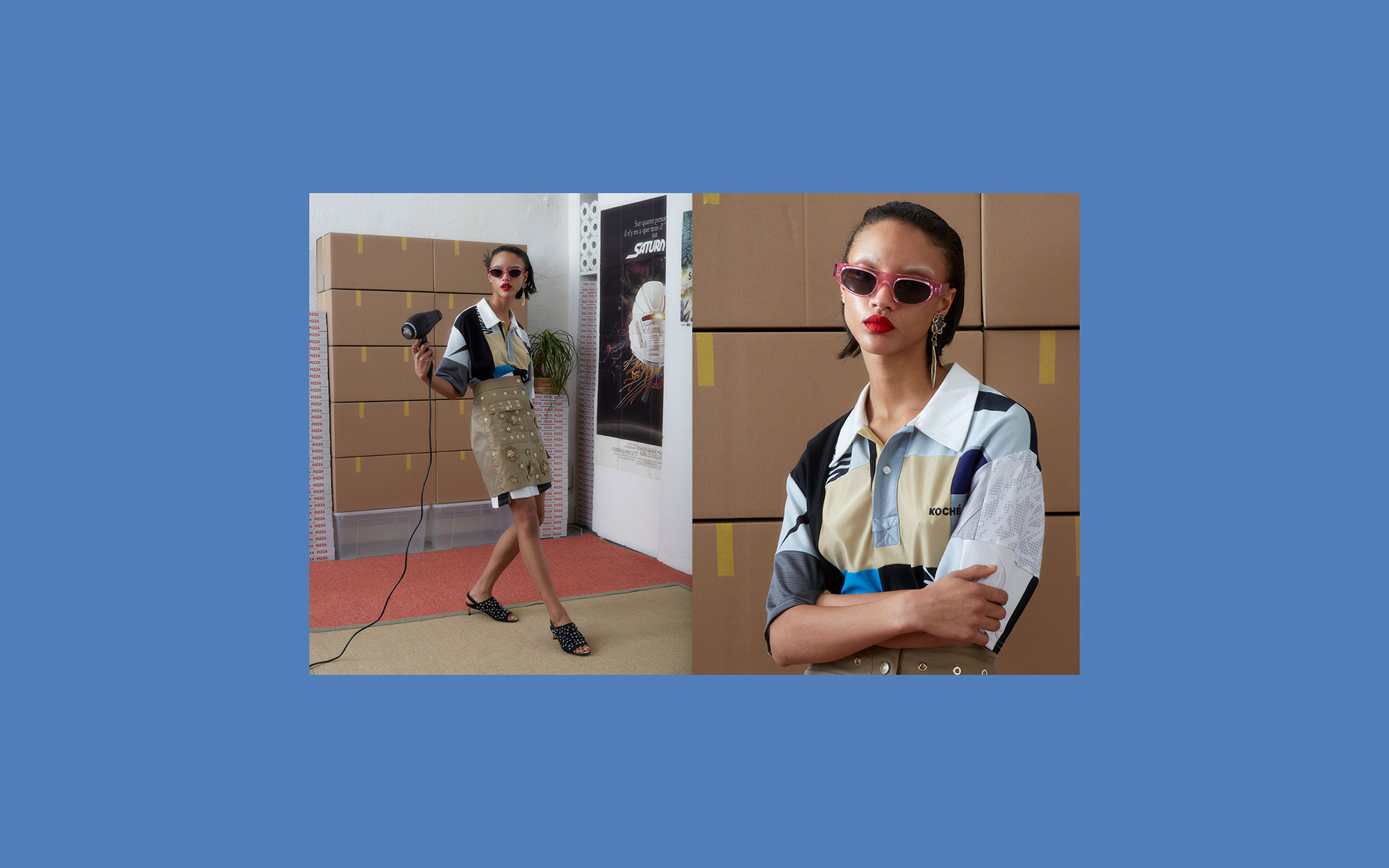
The Emilio Pucci x KOCHÉ collection was announced a few weeks back, and now you’ve guest designed a collection for Pucci that was shown during Milan Fashion Week. Did you get to dig into the archives of Pucci?
The Pucci collaboration is very exciting! I deep-dived into the archives which are really, really fabulous. It’s a treasure and I had a great time working on it. This project is a real collaboration, so you will find some KOCHÉ elements and some Pucci elements. It is a real mix. I am very proud of it.
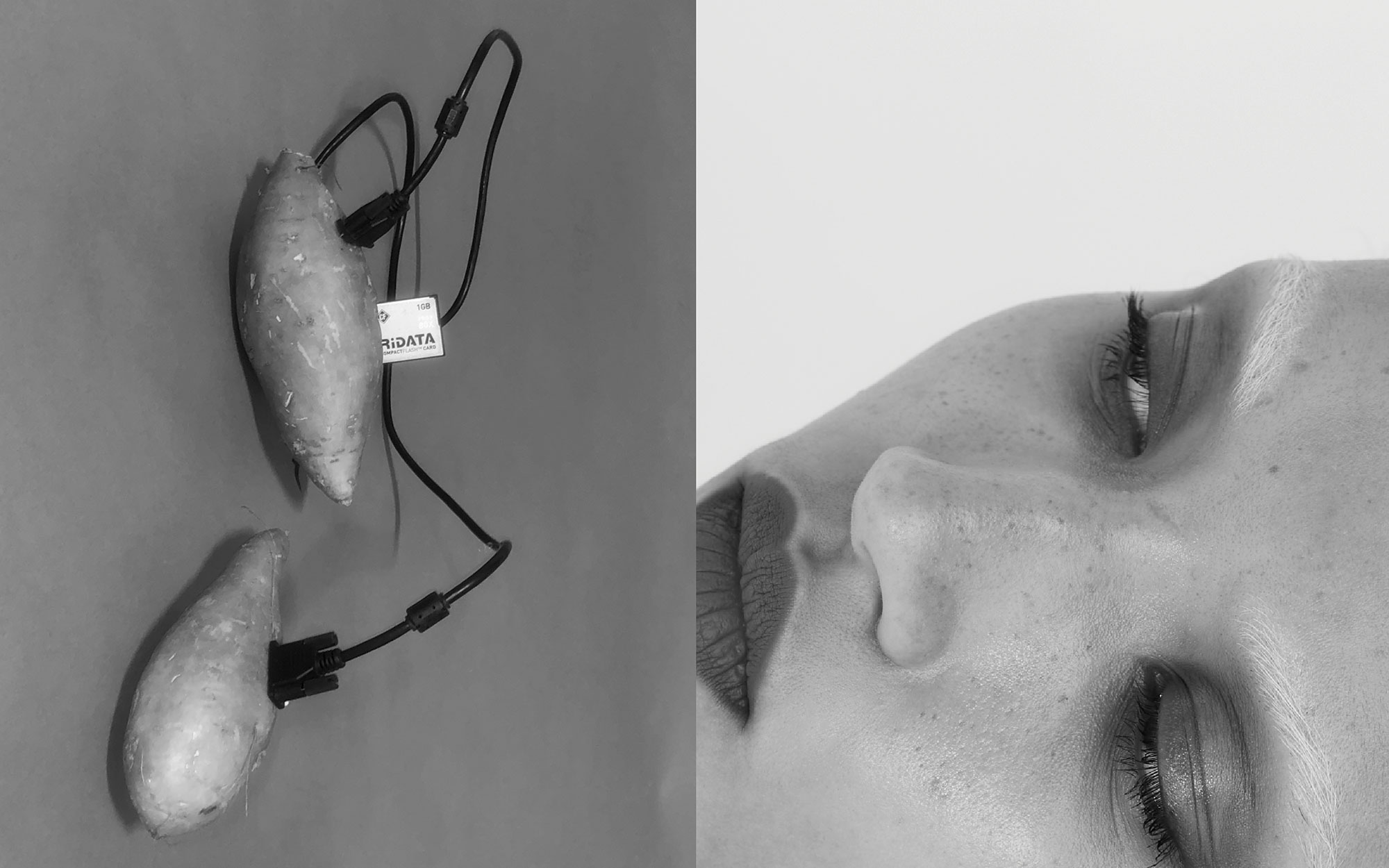
How do you find the pace of fashion now? Is it ever overwhelming to balance everything or do you have a system to manage extensive workflow?
The pace of fashion is really intense nowadays. More collections, more shows, more everything… But I do like it, I don’t complain. I always worked on different projects at the same time. This is the new pace of the world and this speed is also very stimulating for me. But it is really important to step back from time to time. It allows me to catch the big picture of my work and also of the industry. It is necessary to have these moments of calm to ensure consistency and stay relevant.
What do you think fashion’s role will be in the changing environmental crisis? What are our responsibilities?
It’s a tricky role for sure and it’s more than the recycling issue. I’m very careful with big announcements of conscious choices that only aim to sell more. At one point we will have to deal with how much we produce and what our real needs are.
In what way are you shaping the future? In what way did the past shape you?
“The past is always tense, the future perfect.” Zadie Smith
